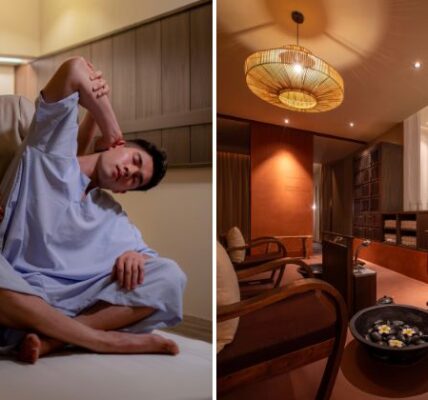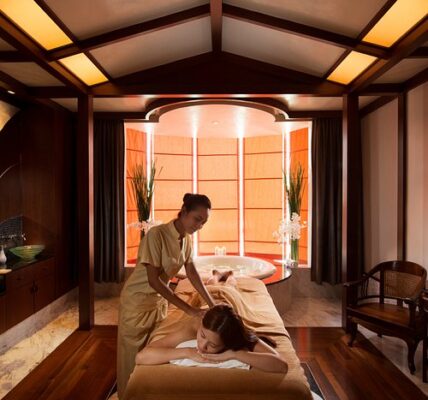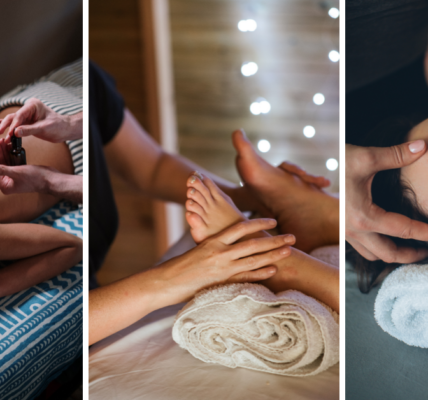Malaysia is a country rich in cultural diversity, and this extends to its thriving wellness and massage industry. From traditional Malay healing techniques to Chinese acupressure, Indian Ayurvedic treatments, and modern spa therapies, Malaysia offers a unique blend of massage experiences that cater to relaxation, rejuvenation, and therapeutic healing. The demand for massage therapy in Malaysia has grown significantly over the years, with both locals and tourists seeking relief from stress, muscle tension, and various health conditions. Whether it’s in a luxurious spa, a wellness retreat in the highlands, or a simple massage center in a bustling market, the country provides numerous options for those looking to experience the benefits of massage. As wellness tourism continues to flourish, Malaysia remains a prime destination for holistic treatments that promote physical and mental well-being.
Traditional Malay massage, or “urut,” is one of the most widely practiced massage techniques in Malaysia, deeply rooted in the country’s heritage. It is a full-body massage that involves deep pressure, kneading, and long strokes to stimulate blood circulation, relieve muscle stiffness, and promote overall relaxation. This therapy is often used in postnatal care for new mothers, as well as for individuals recovering from physical strain or injuries. Malay massage therapists commonly use herbal oils infused with medicinal plants such as ginger, lemongrass, and betel leaves to enhance the healing effects of the treatment. Many massage practitioners have learned their skills through generations of knowledge passed down within families, preserving the authenticity and effectiveness of this traditional practice. The holistic approach of Malay massage makes it an excellent choice for those looking for both relaxation and therapeutic benefits.
Chinese massage techniques, particularly Tui Na and reflexology, are also popular in Malaysia due to the country’s significant Chinese community. Tui Na is a deep tissue massage that focuses on acupressure points to restore the body’s energy balance and relieve pain and tension. Reflexology, on the other hand, is based on the concept that different points on the feet correspond to various organs in the body, and applying pressure to these points can promote overall health and well-being. Reflexology centers are widely available across Malaysia, especially in shopping malls, street markets, and wellness centers. Many people visit these centers for quick foot massages, believing that the practice can help improve circulation, boost energy levels, and alleviate stress. The accessibility and affordability of Chinese massage treatments make them a popular choice for both locals and tourists seeking a convenient way to relax and rejuvenate.
Indian Ayurvedic massage is another highly sought-after wellness therapy in Malaysia, influenced by the country’s strong Indian heritage. Ayurveda, an ancient system of holistic healing from India, emphasizes balance between the body, mind, and spirit. Ayurvedic massages use warm herbal oils, rhythmic strokes, and specialized techniques to detoxify the body, reduce stress, and enhance circulation. Popular treatments include Abhyanga, a full-body oil massage, and Shirodhara, where warm oil is gently poured over the forehead to promote deep relaxation and mental clarity. Many Ayurvedic wellness centers in Malaysia provide these treatments as part of a larger wellness program, often combining massage therapy with yoga, meditation, and herbal remedies. This comprehensive approach to well-being appeals to those looking for natural and long-term healing solutions.

While traditional b2b melaka massages continue to thrive, Malaysia has also embraced modern spa and wellness treatments that integrate global techniques with local traditions. Luxury spas in five-star resorts, beachside retreats, and urban wellness centers offer an array of massage therapies, including aromatherapy massages, Swedish massages, and deep tissue treatments. These modern spas focus on providing a complete relaxation experience, often incorporating elements such as hot stone therapy, hydrotherapy, and essential oils to enhance the therapeutic effects. Many of these spas are set in tranquil locations, such as Langkawi, the Cameron Highlands, and private wellness resorts, offering a peaceful escape from the stresses of daily life. The combination of traditional knowledge with contemporary spa practices has elevated Malaysia’s wellness industry, attracting visitors from around the world.
The future of massage therapy in Malaysia looks promising, with increasing awareness of its benefits for both relaxation and medical rehabilitation. As people become more health-conscious, massage therapy is being recognized as more than just a luxury but as an essential part of self-care and overall well-being. The integration of massage therapy into medical treatments, such as physiotherapy and post-surgical rehabilitation, further highlights its importance in healthcare. The growing trend of wellness tourism in Malaysia is also contributing to the expansion of the industry, as more travelers seek holistic experiences that combine cultural immersion with health and relaxation. With its rich heritage, skilled practitioners, and diverse range of massage therapies, Malaysia continues to be a top destination for those looking to experience the healing power of touch in an environment that blends tradition with modern innovation.



